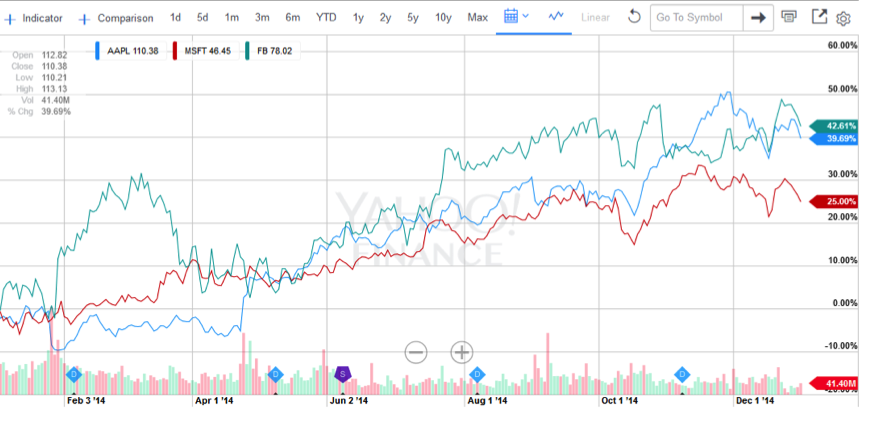
This is a guest post by my friend and fantasy football foe Brian Waters.
By Brian Waters, CFP®
Note: Nothing mentioned in this article is meant to be a recommendation for your investment portfolio.
The rapid increase in popularity of daily fantasy football leagues like DraftKings and FanDuel has triggered a debate over whether these games constitute gambling. One of the biggest arguments I hear in this debate is that playing daily fantasy leagues is as much like gambling as investing in the stock market. As a Certified Financial Planner™ who plays fantasy football, I’ve always been irked by that claim. Though there are similarities between fantasy football and the stock market, which I’ll get to below, there are some blatant differences between the two that should be clarified.
How They Differ
The first and biggest difference between daily fantasy football leagues and the stock market is the idea of “winning.” The objective in daily fantasy is very simple: score more points than your opponent to win money. If you score fewer points, you lose the money you put forth to play. This zero-sum aspect to daily fantasy makes it much closer to blackjack than investing.
In the stock market, each investor has a different risk tolerance, timeline, objective, and experience to factor into each investment decision. These different factors impact performance; therefore, each investor generally has a different idea of what it means to “win” in the stock market. A retiree taking regular withdrawals from their account will likely be invested much more conservatively than a 25 year old who has 40 years before withdrawals will begin. In this example, the retiree and the young worker likely view “winning” differently because they likely have different objectives (income vs. growth) and timelines (short vs. long).
With investing, multiple investments can win on different levels. Here is a chart showing returns of Company A (blue), Company B (red), and Company C (green) shares from January 1, 2014 to December 31, 2014:

As you can see, each gained in 2014; however, Company B was outpaced by C and A. If you held B shares, it would be hard to say you “lost” in 2014 because you still had a 25% gain. “Winning” in the stock market, then, can mean different things for different people.
How They’re Similar
Though, in my mind, the differences between investing and fantasy football outweigh the similarities, let’s look at what they have in common.
Research
Shifting from daily/weekly fantasy leagues to the season-long leagues, in both investing and fantasy football it is important to do your research. Before the draft and during the season, a manager has to consider a lot of questions that will affect his team’s probability of success: How does this player perform against this team? How injury-prone is my running back? Does my defense play well against a passing offense? Which of my receivers have the most favorable matchup this week?
Similarly, investors may ask: How does this stock perform in rising interest environments? Will the seasonably warm weather affect sales? Will slower GDP growth in China affect future overseas earnings? And so on. The ability to accurately predict the answers to these questions will likely help a fantasy football team or an investment portfolio find success.
Diversification
To maintain a successful fantasy team throughout the season, you want a roster filled with dependable players who perform consistently week to week, along with certain “high flier” players that put up high point totals. Consistent players like Tom Brady, Antonio Brown, Adrian Peterson, and Matt Forte can dependably put up a predictable amount of points and make up your roster’s foundation each week. Supplementing this foundation with high fliers like Odell Beckham Jr, Dez Bryant, Ronnie Hillman, and Danny Woodhead—less predictable playmakers who could put up a huge game one week and get shut down the next—will give you the best chance to defeat your opponent each week.
Likewise with investing: depending on your risk tolerance and timeline, portfolios generally balance growth and value stocks, as well as bonds and other investment types. Certain stocks carry a lot of risk that can propel a portfolio in good years and drag it in bad years. Because of that risk, investors generally carry different weights of these investment types to help them reach their financial goals.
Management
Fantasy football rosters undergo lots of change throughout the season. Good managers maintain healthy rosters through bye weeks, suspensions, injuries, and other unexpected factors. If an injured player is expected to return in a few weeks, managers have to decide if that player is worth holding onto on the bench or if they should be let go for a player who can play right away. When reviewing trades, managers should try to swap overvalued players for those who will likely perform better in the future. And when considering players available on the waiver wire, they should beware overreacting to player having a breakout game and potentially dropping a player whose best performances are ahead of him.
Principles of investing follow many of these same rules. Many investors ask themselves if a security is worth holding through a bad earnings report or corporate leadership change. They also must decide if swapping one stock for another is an overreaction to a current slide in the price. Ultimately, the general goal is to buy low and sell high with investments, just as it is in making trades and waiver wire pickups in fantasy football.
Conclusion
Comparing investments to fantasy football is like comparing apples and oranges. Just because you may be good at fantasy football does not mean you will be successful at investing. This was an exercise of combining two aspects of my life that I find interesting and relevant.
(Photo credit: Daniel X. O’Neil)